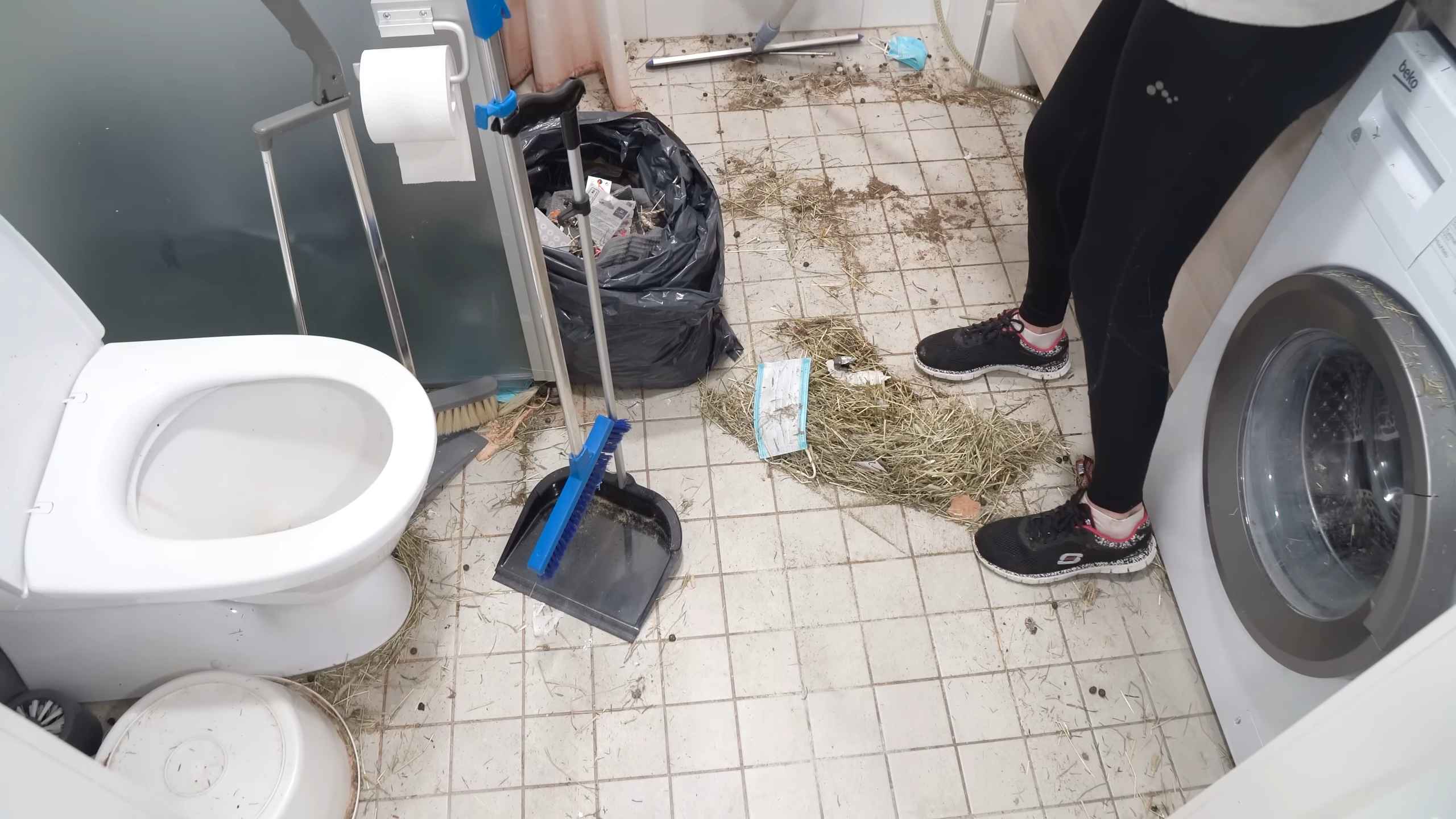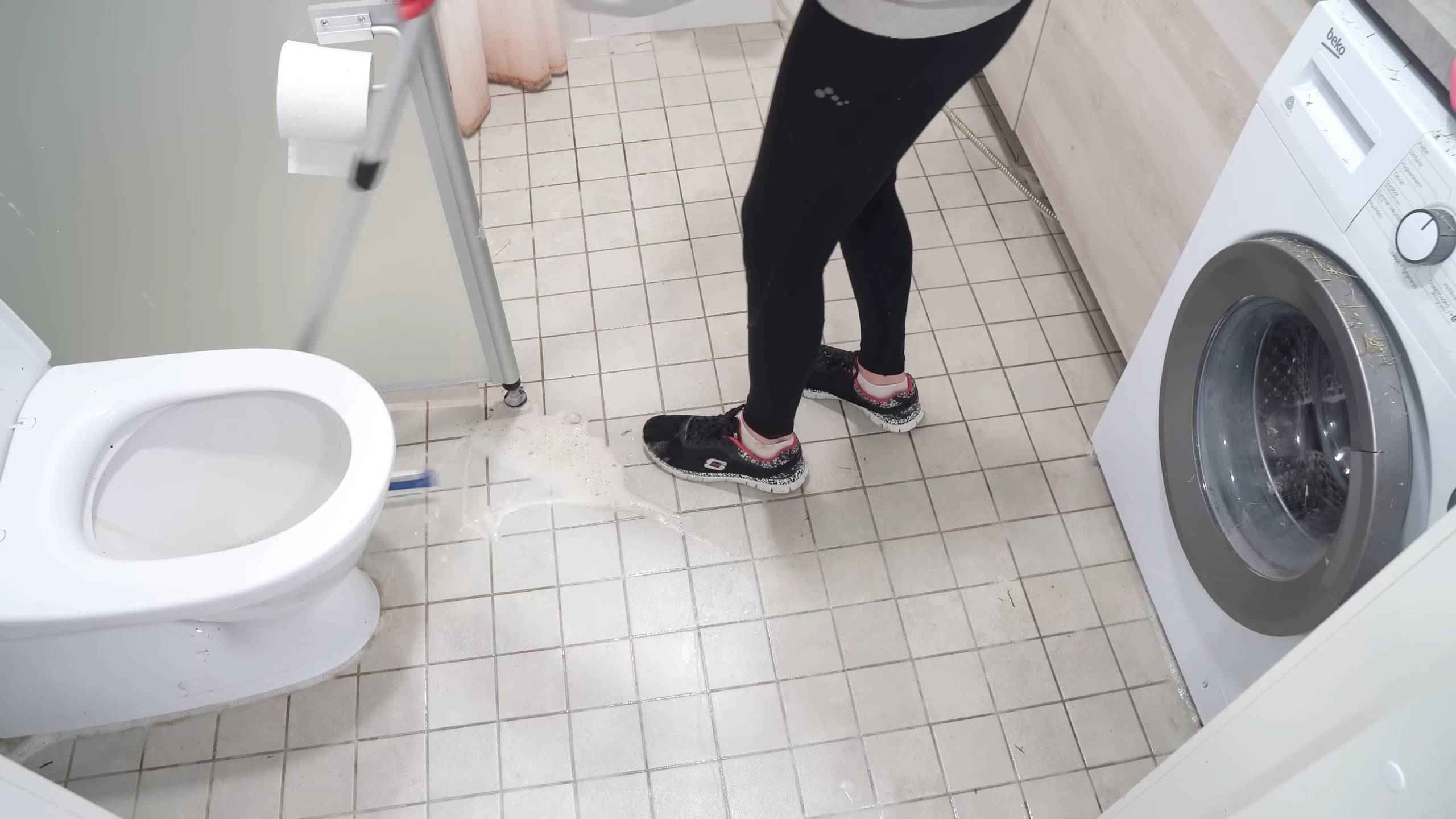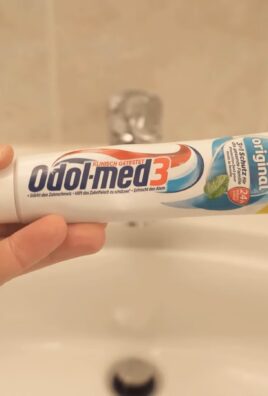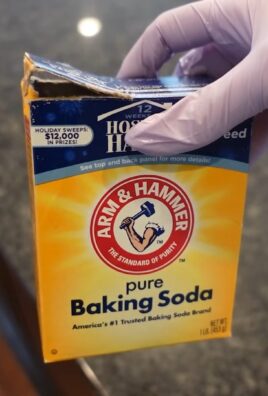Clean Bathtub and Shower Tips: Are you tired of battling stubborn soap scum and mildew in your bathroom? I know I was! For years, my bathtub and shower felt like a constant uphill battle against grime. It seemed like no matter how much I scrubbed, those unsightly stains just kept coming back. But don’t worry, you’re not alone!
Keeping our bathing spaces sparkling clean has been a concern for centuries. From ancient Roman bathhouses meticulously maintained by slaves to modern-day cleaning products, the quest for a pristine bathing experience is a timeless one. But let’s be honest, who has the time (or the budget) for constant professional cleaning? That’s where these fantastic DIY tricks come in!
In today’s busy world, a clean and inviting bathroom is more than just aesthetically pleasing; it’s a sanctuary. A sparkling bathtub and shower can transform your daily routine into a relaxing and rejuvenating experience. Plus, preventing the buildup of mold and mildew is crucial for maintaining a healthy home environment. That’s why I’m so excited to share these simple, effective, and budget-friendly clean bathtub and shower tips that will leave your bathroom looking and feeling its best. Get ready to say goodbye to harsh chemicals and hello to a naturally clean and refreshing space!

DIY Sparkling Clean Bathtub and Shower: A Guide to Effortless Cleaning
Okay, let’s face it, cleaning the bathtub and shower is nobody’s favorite chore. But a sparkling clean bathroom makes a huge difference! I’m going to share my tried-and-true DIY methods for getting your tub and shower gleaming without harsh chemicals or endless scrubbing. Get ready to say goodbye to soap scum, mildew, and hard water stains!
What You’ll Need: The Cleaning Arsenal
Before we dive in, let’s gather our supplies. The beauty of these methods is that they mostly use ingredients you probably already have in your pantry!
* **Spray Bottle:** An empty spray bottle is essential for applying our cleaning solutions.
* **White Vinegar:** This is our star player! Vinegar’s acidity cuts through soap scum and hard water like a champ.
* **Dish Soap:** A good quality dish soap helps to break down grease and grime. I prefer something with degreasing power.
* **Baking Soda:** This is our gentle abrasive. It’s perfect for scrubbing away stubborn stains without scratching surfaces.
* **Hydrogen Peroxide:** A natural disinfectant and stain remover. Great for tackling mildew.
* **Essential Oils (Optional):** Lemon, tea tree, or eucalyptus oil can add a pleasant scent and boost cleaning power.
* **Scrub Brush:** Choose a brush with stiff bristles for effective scrubbing. An old toothbrush is great for grout.
* **Sponge or Microfiber Cloth:** For wiping down surfaces.
* **Squeegee:** A squeegee is your best friend for preventing water spots and mildew growth after each shower.
* **Rubber Gloves:** Protect your hands from cleaning solutions.
* **Old Towels or Rags:** For wiping up spills and drying surfaces.
Method 1: The Vinegar and Dish Soap Power Duo
This is my go-to method for general cleaning and maintenance. It’s quick, easy, and incredibly effective.
Step-by-Step Instructions:
1. **Mix the Solution:** In your spray bottle, combine equal parts white vinegar and dish soap. I usually start with about 1 cup of each. Gently swirl to mix, avoiding excessive suds.
2. **Warm the Vinegar (Optional):** For extra cleaning power, you can microwave the vinegar for about 30 seconds before mixing it with the dish soap. Be careful, it will be hot!
3. **Spray and Soak:** Generously spray the entire shower and tub area with the vinegar and dish soap mixture. Make sure to coat all surfaces, including the walls, floor, and fixtures.
4. **Let it Sit:** Allow the solution to sit for at least 30 minutes. For tougher stains, you can let it sit for up to a few hours. The longer it sits, the better it will work.
5. **Scrub-a-dub-dub:** After the soaking period, use your scrub brush or sponge to scrub all surfaces. Pay extra attention to areas with soap scum, mildew, or hard water stains.
6. **Rinse Thoroughly:** Rinse the entire shower and tub area with hot water. Make sure to remove all traces of the cleaning solution.
7. **Dry and Shine:** Use a clean towel or squeegee to dry all surfaces. This will help prevent water spots and mildew growth.
Method 2: Baking Soda Scrub for Stubborn Stains
When vinegar and dish soap aren’t enough, baking soda comes to the rescue! Its mild abrasive properties make it perfect for tackling stubborn stains without damaging surfaces.
Step-by-Step Instructions:
1. **Make a Paste:** In a small bowl, mix baking soda with a little water to form a thick paste. You want it to be thick enough to stick to surfaces.
2. **Apply the Paste:** Apply the baking soda paste to the stained areas. You can use your fingers, a sponge, or a scrub brush.
3. **Let it Dry:** Allow the paste to dry completely. This usually takes about 30 minutes to an hour. As it dries, it will help to lift the stains.
4. **Scrub and Rinse:** Once the paste is dry, use a scrub brush or sponge to scrub the area. The baking soda will act as a gentle abrasive to remove the stains.
5. **Rinse Thoroughly:** Rinse the area with water to remove all traces of baking soda.
6. **Repeat if Necessary:** For really stubborn stains, you may need to repeat the process.
Method 3: Hydrogen Peroxide for Mildew Removal
Mildew is a common problem in bathrooms, especially in damp areas like the shower. Hydrogen peroxide is a natural disinfectant that can effectively kill mildew and prevent it from returning.
Step-by-Step Instructions:
1. **Spray the Affected Area:** Pour hydrogen peroxide into a spray bottle and spray it directly onto the mildewed areas.
2. **Let it Sit:** Allow the hydrogen peroxide to sit for at least 10 minutes. This will give it time to kill the mildew.
3. **Scrub and Rinse:** After the soaking period, use a scrub brush or sponge to scrub the area.
4. **Rinse Thoroughly:** Rinse the area with water to remove all traces of hydrogen peroxide.
5. **Dry the Area:** Dry the area thoroughly to prevent mildew from returning.
Method 4: Grout Cleaning Power
Grout can be a real pain to clean! It’s porous and easily absorbs dirt, grime, and mildew. Here’s my secret weapon for sparkling clean grout:
Step-by-Step Instructions:
1. **Baking Soda Paste:** Mix baking soda with a little water to form a thick paste.
2. **Apply to Grout:** Apply the paste to the grout lines.
3. **Spray with Vinegar:** Spray the baking soda paste with white vinegar. This will create a fizzing action that helps to loosen dirt and grime.
4. **Let it Fizz:** Allow the mixture to fizz for a few minutes.
5. **Scrub with a Brush:** Use an old toothbrush or a grout brush to scrub the grout lines.
6. **Rinse Thoroughly:** Rinse the area with water to remove all traces of baking soda and vinegar.
7. **Repeat if Necessary:** For heavily soiled grout, you may need to repeat the process.
Preventative Measures: Keeping Your Shower Sparkling Longer
Cleaning is great, but preventing build-up is even better! Here are a few tips to keep your shower and tub cleaner for longer:
* **Squeegee After Each Shower:** This is the single most effective thing you can do to prevent water spots and mildew growth. A quick squeegee after each shower will make a huge difference.
* **Ventilate the Bathroom:** Always run the exhaust fan during and after showering to remove moisture from the air.
* **Leave the Shower Door Open:** Leaving the shower door or curtain open after showering allows air to circulate and helps to dry out the shower.
* **Regular Cleaning:** Don’t wait until your shower is covered in grime to clean it. A quick cleaning once a week will prevent build-up and make the job much easier.
* **Use a Shower Cleaner Spray:** There are many commercially available shower cleaner sprays that you can use after each shower to help prevent build-up. Look for natural or eco-friendly options.
* **Consider a Water Softener:** If you have hard water, a water softener can help to reduce mineral build-up in your shower and tub.
Essential Oil Boost (Optional):
Adding a few drops of essential oils to your cleaning solutions can not only make your bathroom smell amazing but also boost the cleaning power.
* **Lemon Oil:** Has antibacterial and antifungal properties and a refreshing scent.
* **Tea Tree Oil:** A powerful antiseptic and antifungal agent, perfect for fighting mildew.
* **Eucalyptus Oil:** Has antibacterial and antiviral properties and a refreshing, invigorating scent.
Simply add 5-10 drops of your chosen essential oil to your cleaning solution before spraying.
Safety First!
While these DIY cleaning methods are generally safe, it’s always a good idea to take a few precautions:
* **Wear Rubber Gloves:** Protect your hands from cleaning solutions.
* **Avoid Mixing Chemicals:** Never mix different cleaning products together, as this can create dangerous fumes.
* **Ventilate the Area:** Make sure the bathroom is well-ventilated while you’re cleaning.
* **Test on a Small Area:** Before applying any cleaning solution to a large area, test it on a small, inconspicuous area to make sure it doesn’t damage the surface.
With these DIY cleaning methods and preventative measures, you can keep your bathtub and shower sparkling clean without harsh chemicals or endless scrubbing. Happy cleaning!

Conclusion
So, there you have it! This simple yet incredibly effective DIY trick for cleaning your bathtub and shower is a game-changer. Forget spending a fortune on harsh chemicals that leave behind lingering odors and potentially damage your surfaces. This method is not only budget-friendly and eco-conscious, but it also delivers sparkling results that you’ll be proud of.
Why is this a must-try? Because it simplifies your cleaning routine, saves you money, and is gentler on your skin and the environment. The combination of readily available ingredients creates a powerful cleaning solution that tackles soap scum, hard water stains, and mildew with ease. You’ll be amazed at how quickly and effortlessly you can transform your bathroom into a pristine sanctuary.
But don’t just take our word for it! We encourage you to experiment and personalize this DIY cleaning solution to suit your specific needs and preferences. For instance, if you’re dealing with particularly stubborn stains, consider adding a few drops of tea tree oil to the mixture for its natural antifungal and antibacterial properties. Or, if you prefer a different scent, feel free to swap out the lemon essential oil for lavender, eucalyptus, or your favorite fragrance. You can also adjust the ratio of ingredients slightly to find the perfect balance for your bathtub and shower surfaces. Remember to always test a small, inconspicuous area first to ensure compatibility.
Another variation you might consider is using a microfiber cloth or sponge instead of a regular sponge. Microfiber is known for its superior cleaning power and ability to trap dirt and grime, making it an excellent choice for tackling tough bathroom messes. You can also use an old toothbrush to scrub grout lines and hard-to-reach areas.
The beauty of this DIY approach is its flexibility. You can adapt it to your specific needs and preferences, making it a truly personalized cleaning solution. And the best part? You’ll be saving money and reducing your reliance on harsh chemicals in the process.
We are confident that once you try this DIY trick for cleaning your bathtub and shower, you’ll never go back to store-bought cleaners again. It’s a simple, effective, and eco-friendly way to keep your bathroom sparkling clean and fresh.
So, what are you waiting for? Gather your ingredients, follow the steps, and prepare to be amazed by the results. We’re eager to hear about your experience! Share your before-and-after photos and tips in the comments below. Let’s create a community of clean bathroom enthusiasts who are passionate about DIY solutions and sustainable living. Let us know how this DIY bathtub cleaner worked for you!
Frequently Asked Questions (FAQs)
Q: Is this DIY cleaning solution safe for all types of bathtubs and showers?
A: While this DIY cleaning solution is generally safe for most bathtub and shower surfaces, including porcelain, ceramic tile, fiberglass, and acrylic, it’s always a good idea to test it on a small, inconspicuous area first. This will help you ensure that it doesn’t damage or discolor the surface. Avoid using this solution on natural stone surfaces like marble or granite, as the acidity of the vinegar may etch or damage them. For natural stone, use a pH-neutral cleaner specifically designed for those materials.
Q: How often should I use this DIY cleaning solution?
A: The frequency of cleaning depends on how often you use your bathtub and shower and how quickly they accumulate soap scum and grime. For most households, cleaning once a week is sufficient to maintain a clean and fresh bathroom. However, if you have a large family or use your bathtub and shower frequently, you may need to clean them more often. You can also use this solution as a spot cleaner for tackling stubborn stains as they appear.
Q: Can I use a different type of vinegar instead of white vinegar?
A: White vinegar is the preferred choice for this DIY cleaning solution due to its high acidity and lack of color, which minimizes the risk of staining. However, you can use apple cider vinegar as a substitute, although it may have a slightly less potent cleaning effect and could leave a faint scent. Avoid using balsamic vinegar or red wine vinegar, as they can stain your bathtub and shower surfaces.
Q: What if I don’t have essential oils? Can I still use this DIY cleaning solution?
A: Yes, you can still use this DIY cleaning solution without essential oils. The vinegar and dish soap are the primary cleaning agents, and they will still effectively remove soap scum and grime. Essential oils are added primarily for their fragrance and potential antibacterial properties. If you don’t have essential oils, you can simply omit them or add a few drops of your favorite fragrance oil.
Q: How do I prevent soap scum from building up in the first place?
A: Preventing soap scum buildup is easier than removing it. Here are a few tips:
* Switch to liquid soap: Liquid soaps tend to create less soap scum than bar soaps.
* Use a squeegee: After each shower, use a squeegee to remove excess water from the walls and shower door. This will help prevent water spots and soap scum from forming.
* Improve ventilation: Ensure that your bathroom is well-ventilated by opening a window or turning on the exhaust fan during and after showers. This will help reduce humidity and prevent mildew growth.
* Regularly wipe down surfaces: Wipe down your bathtub and shower surfaces with a damp cloth or sponge after each use to remove any lingering soap residue.
Q: My bathtub has really tough stains. Will this DIY cleaning solution work?
A: This DIY cleaning solution is effective for removing most soap scum and hard water stains. However, for really tough stains, you may need to take a few extra steps. Try letting the solution sit on the stains for a longer period of time, up to 30 minutes, before scrubbing. You can also try using a scrub brush or an old toothbrush to scrub the stains more vigorously. For extremely stubborn stains, you may need to repeat the process or try a different cleaning solution specifically designed for removing tough stains. Baking soda paste can also be used as a pre-treatment for stubborn stains.
Q: Can I store the leftover DIY cleaning solution?
A: Yes, you can store the leftover DIY cleaning solution in a spray bottle for future use. Be sure to label the bottle clearly and store it in a cool, dark place away from children and pets. The solution should remain effective for several weeks. However, it’s best to use it within a month or two for optimal results.
Q: Is this DIY cleaning solution safe for septic systems?
A: Yes, this DIY cleaning solution is generally safe for septic systems. The ingredients are biodegradable and won’t harm the beneficial bacteria in your septic tank. However, it’s always a good idea to use cleaning products sparingly and avoid pouring large amounts of any cleaning solution down the drain at once.
Q: What other essential oils can I use besides lemon?
A: The possibilities are endless! Lavender essential oil provides a calming and relaxing scent, while eucalyptus essential oil offers a refreshing and invigorating aroma. Tea tree oil has natural antifungal and antibacterial properties, making it a great choice for preventing mildew growth. Peppermint essential oil can help to freshen the air and deter pests. Experiment with different essential oils to find your favorite scent combination.




Leave a Comment